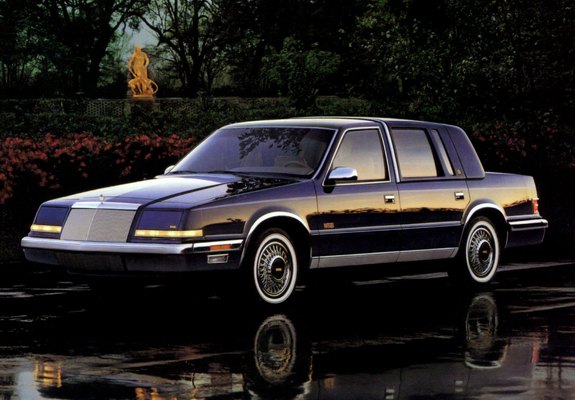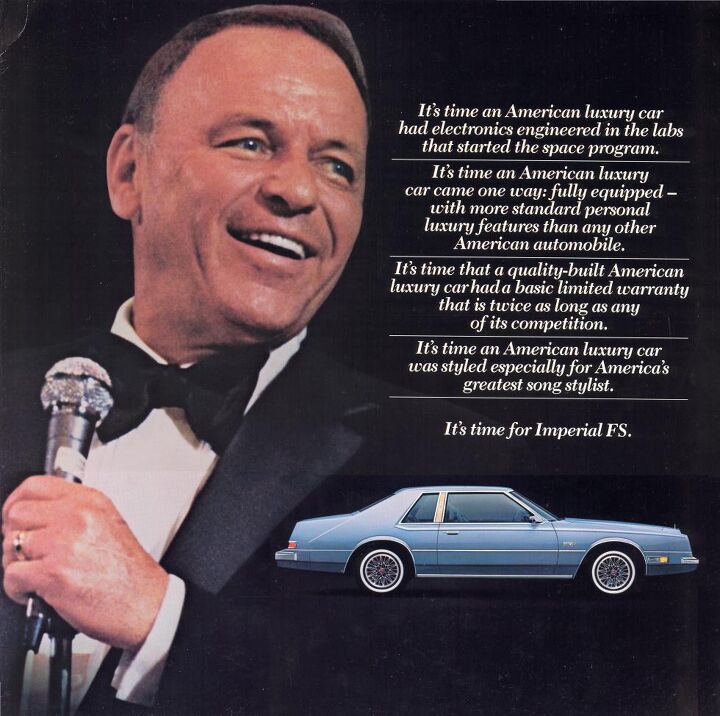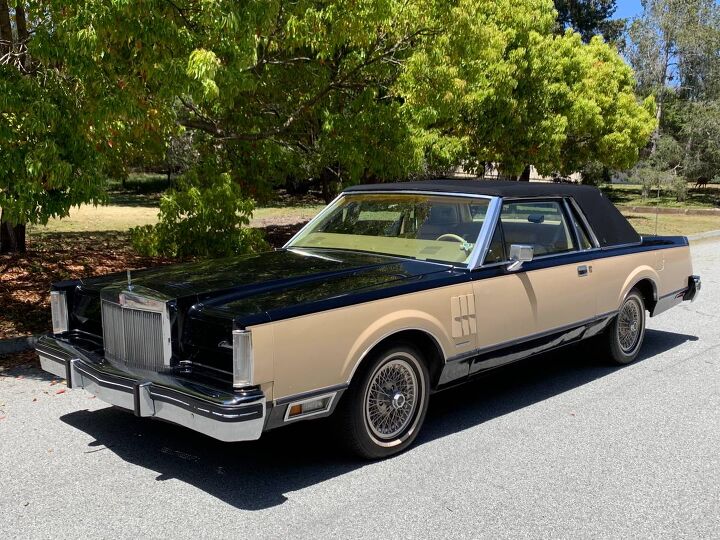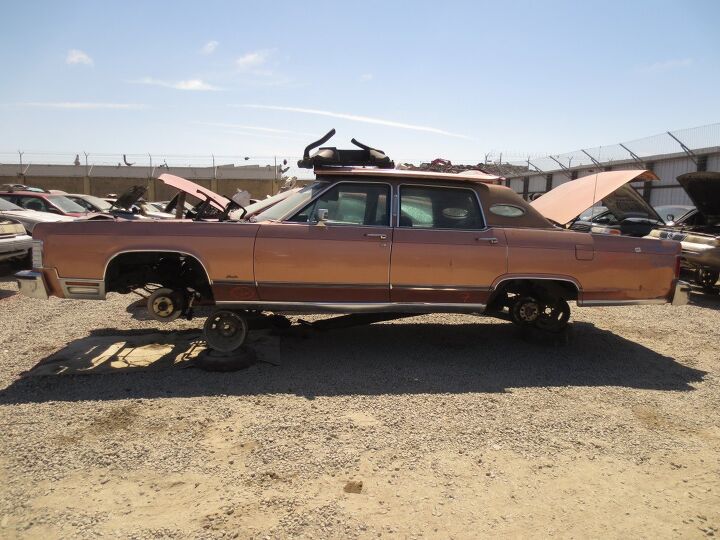#cartier
Rare Rides Icons: The History of Imperial, More Than Just a Car (Part XXII)
Today we reach the 22nd and final installment in the Imperial series. In our last edition, we reviewed the development and birth of the final production car to wear the Imperial name: The super-extended K-car platform known as the Y-body. Lee Iacocca was keen on the idea of a full-size luxury sedan for the elderly customer, but Chrysler had neither the resources nor the platform to do it properly. Thus the Y-body appeared, and its angular and pencil-thin shape went on sale in 1990 alongside the similarly lengthened Chrysler New Yorker Fifth Avenue. Speaking of angles, let’s talk about that sweet money-saving clip swap action.
Rare Rides Icons: The History of Imperial, More Than Just a Car (Part XXI)
We find ourselves at the final two installments of the long-running Imperial series today. It’s been almost six months since the first Imperial entry, when a new model was dreamt up by Chrysler’s founder as competition for the likes of Pierce-Arrow and Studebaker. The Imperial name outlived most of the Twenties competition it was designed to beat, though along the way it drifted both nearer and further to the original mission. The concluding entrant into the Imperial lineage was definitely the weakest ever. K-car time, commence!
Rare Rides Icons: The History of Imperial, More Than Just a Car (Part XX)
Here we are, the 20th installment of the Imperial series. We’ve covered the Imperial’s inception as a coach-built car for the wealthy, through its Fifties rebirth as an independent brand with hand-built quality that rivaled the best luxury car makers had to offer. From there Imperial’s tale was ups and downs (mostly downs) as Chrysler’s luxury arm continually found itself less independent, and more tied to the New Yorker.
But after its sad Seventies cancellation, it was time for an Eighties rebirth under the direction of CEO Lee Iacocca. He was determined to make the best, most exclusive American personal luxury coupe money could buy. To date we’ve learned about the angular bustle back exterior, the J-body Cordoba platform underneath, and the Cordoba-plus leather-lined interior, by Mark Cross. Today we continue with Iacocca’s close personal friend, Frank Sinatra (or ‘FS’ if you’re talking badges.)
Rare Rides Icons: The History of Imperial, More Than Just a Car (Part XIX)
We return to our Imperial series again today, and the third installment on the all-new personal luxury coupe Lee Iacocca launched in 1981 to resurrect the historical Imperial name. Unlike every other Imperial to date, the new one was available only in two-door coupe guise. The new car had the dual mission of bringing luxury car credibility back to Chrysler, and grabbing some high margin luxury coupe sales from GM and in particular, Lincoln and the Continental Mark VI. We’ve covered the exterior and the underpinnings, so today we slide into the interior, which is most definitely not covered in Rich Corinthian Leather.
Rare Rides Icons: The History of Imperial, More Than Just a Car (Part XVIII)
In our most recent installment of our long-running Imperial coverage, the Eighties dawned with a resurrection of the Imperial name and the debut of an exciting new personal luxury coupe. Chrysler’s new chairman Lee Iacocca was determined to recreate the runaway success he’d had at Ford with the Lincoln Continental Mark III. But that meant a simultaneous ask that luxury coupe buyers ignore the very recent financial troubles that plagued the Detroit automaker. And while the exterior of the new Imperial coupe was all bustleback and new angles, its platform and mechanicals were not quite as exciting. Let’s talk about Mirada, Cordoba, and the reliability benefits of electronic fuel injection.
Rare Rides: The Double-breasted 1983 Lincoln Continental Mark VI Bill Blass
A short while ago, we ran a QOTD post about special branded editions, gauging our readers’ desire to see them return in 2019. Today’s Rare Ride is one of the special designer brand editions of yesteryear (the Eighties), which represented luxury, taste, and wealth.
Grab your wide-lapel blazer. It’s time for Bill Blass and the Lincoln Mark VI.
Junkyard Find, Sajeev's Bitter Tears Edition: Lincoln Town Car Cartier Series
Mr. Mehta, lover of all things Ford (except, apparently, the Lincoln Mark VI), was quite put out by my failure to include the “ Sajeev’s Bitter Tears” tag in the 1980 Mercury Capri Junkyard Find post last week.
Not wanting to put him in a bad mood for the upcoming Houston 24 Hours of LeMons race, I have since retrofitted that post with the appropriate weepiness, and as an added bonus I photographed this amazingly Sajeevian Town Car in a Denver self-service yard.
Junkyard Find: 1979 Lincoln Continental Town Car
Malaise Era Lincolns are common sightings in high-turnover pull-yer-part wrecking yards these days, since there’s not much interest in preserving these cars. We saw an extremely clean 1976 Town Car in California a few months back (it’s still on the yard, and very few parts have been pulled since I photographed it), and now I’ve found this rougher (but not at all rusty) ’79 at another San Francisco Bay Area self-serve yard.
Piston Slap: The "Fat" Panther, The Self Aware Man
George writes:
Sajeev, I enjoy TTAC and your writing. Okay, I succumbed to the blandishments of you Panther lovers (and to fond memories of my father driving his Fords and Lincolns), and bought a 1996 Lincoln Town Car Cartier. The car has about 143,000 miles on it, all in North Carolina. The previous (2nd) owner was reportedly a little old lady, and because of the condition of the driver’s seat she could not have weighed much more than 90 or 95 pounds. It is well taken care of and straight.
























Recent Comments